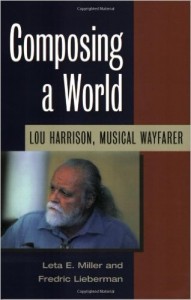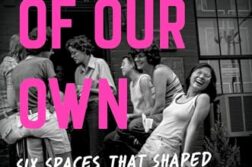 Composing a World: Lou Harrison, Musical Wayfarer
Composing a World: Lou Harrison, Musical Wayfarer
by Leta E. Miller & Fredric Lieberman
University of Illinois Press
381 pages, $35 (paper)
LOU HARRISON’S DEATH on February 2, 2003, left a gap in the classical music world. Ned Rorem said of the bearded, unpretentious musician that he was one of the first American composers to create a workable marriage between Eastern and Western forms. Born on May 14, 1917, Harrison’s family lived in a variety of places, notably central California, New York City, North Carolina, and New Zealand. He also took a variety of jobs to support his career as an up-and-coming composer: record salesman, animal nurse, journalist, florist, forestry firefighter, and dance accompanist. He developed side talents in poetry, calligraphy, and painting, which helped him to become one of American music’s most original figures.






